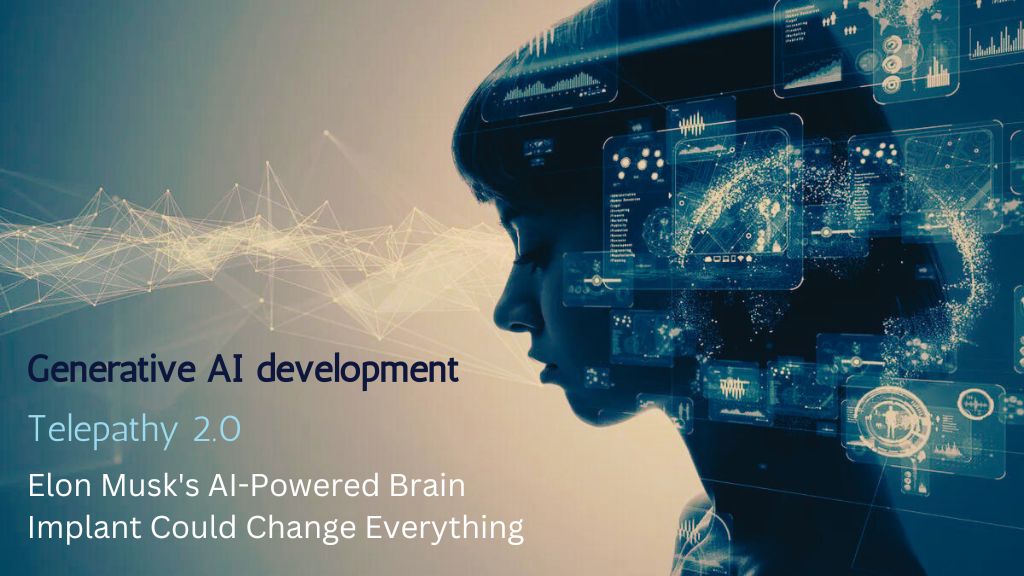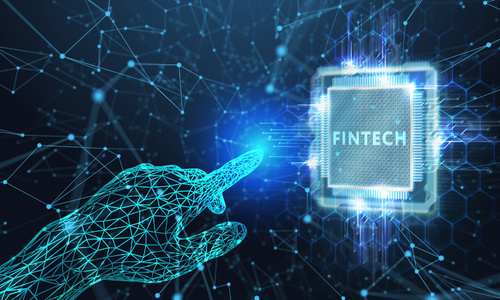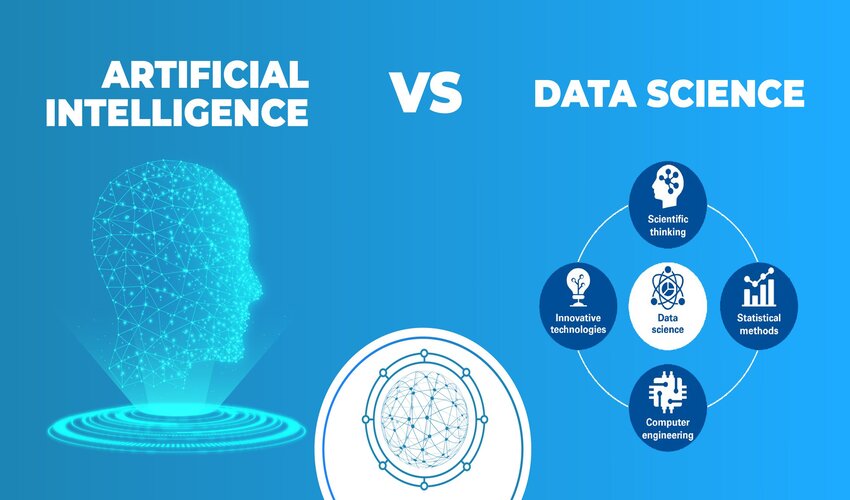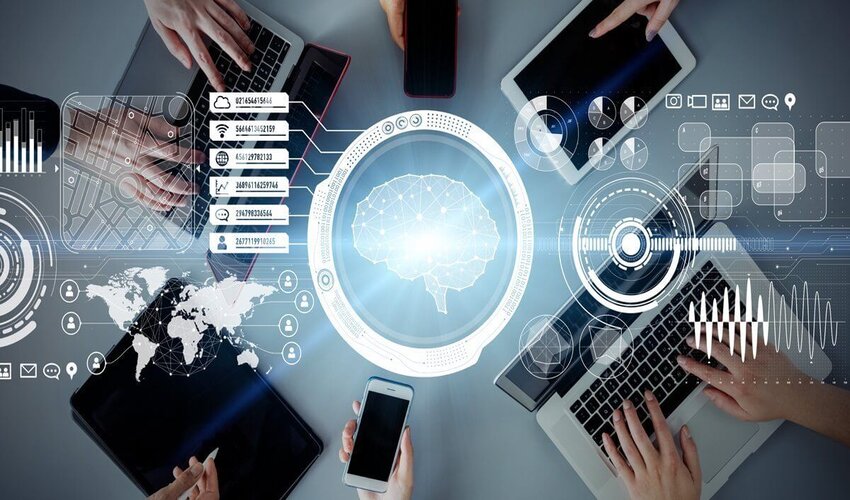Neuralink plans to use artificial intelligence to interpret the immense data from human brains. This experimental neurotechnology evokes both excitement and concern.
While potential applications could help people with disabilities, risks like hacking raise crucial ethical questions.
As this telepathy 2.0 technology nears reality, robust public discussions are urgently needed to steer it responsibly.
As Generative AI development services advance, so will Elon Musk’s AI-Powered Brain Implant.
Neuralink’s Cutting-Edge Tech
Tiny Implants to Link Brains and Machines
At the core of Neuralink’s system are tiny, flexible electrode-studded threads that can be surgically implanted into the folds of the brain.
These threads connect to a miniature computing chip attached behind the ear.
It wirelessly transmits neural data for processing and interprets digital commands sent back to the brain.
This direct brain-computer interface aims to achieve a seamless, high-bandwidth linkage between biological and digital intelligence.
Testing in Animals Shows Promise
So far Neuralink has successfully implanted prototype threads in rats and pigs.
In demos, implanted pigs have used the interface to move cursors on a computer screen with their snout and tongue signals alone.
The animal testing implies the technology can accurately transmit brain signals for a range of complex movements and intentions. Neuralink next plans human trials to further refine the implants.
Envisioning a Sci-Fi Future
Looking ahead, Elon Musk has suggested even more radical applications for Neuralink’s implants, like conceptually telepathic communication between linked minds.
Merging humans and AI is a long-term goal.
While still highly speculative, this research shows how rapidly brain interface capabilities are advancing. It raises intriguing possibilities as well as pressing ethical questions.
Challenges for Long-Term Viability
Biocompatibility Issues
A major obstacle is ensuring the brain implants remain functional and biocompatible over decades inside the brain’s warm, humid environment.
Long-term risks like scarring or immune reactions must be avoided. Extensive clinical trials are still needed to guarantee user safety.
Problems with Current Prototypes
Neuralink’s animal trials reveal challenges to address before human deployment.
Their current electrodes have inconsistent data quality. The implants also damage surface brain tissue during installation. Solving these issues is key for public adoption.
Powering Implants in the Brain
Delivering consistent power to implants buried deep inside the brain presents engineering hurdles.
Inductive charging through the skin can power some surface implants. But batteries may be needed for deeper brain regions, requiring periodic replacement.
Cost Barriers for Widespread Use
Initially, Neuralink’s implants will be expensive since they require custom fabricated components and complex neurosurgery.
Until costs drop substantially, adoption may be limited to the wealthy, exacerbating inequality of access to this advanced technology.
Analyzing Massive Neural Datasets
A major challenge for Neuralink is developing AI that can interpret the enormous data from tens of thousands of electrodes monitoring brain activity.
Advanced machine learning algorithms will be needed to decode and comprehend a user’s unspoken thoughts, emotions, and intended actions.
Potential for Mind Reading
If the AI gets sophisticated enough, Neuralink’s brain implants could theoretically read minds.
Having an untapped stream of your conscious and unconscious thoughts accessed raises deep concerns around privacy, consent, and manipulation.
There is risk of corporations or governments exploiting mind reading abilities without oversight.
Security Weak Points for Hackers
No data system is perfectly secure, so neural interfaces may have vulnerabilities.
Hackers might be able to access, spy on, or alter someone’s thoughts and memories without their knowledge.
Imagine the harm if neural implants can be remotely hacked to modify emotions or behavior. Strong cybersecurity measures will be essential.
Interpreting Subjective Experiences
Mapping Complex Neural Activity
Our brains contain around 86 billion neurons with trillions of connections.
Capturing and mapping this vast, dynamic network poses immense computational challenges. There is still so much we don’t understand about the brain’s neuronal signaling.
Personalized Readings
People’s brains differ, so training AI on general datasets may not capture individual users’ unique neural patterns.
Achieving accurate personalized mind readings requires custom tuning the algorithms for each implant recipient.
Subjectivity of Conscious Experience
Our subjective experience extends far beyond what can be objectively measured in neural impulses.
How neural signals translate into thoughts, emotions and imaginations differs across individuals and contexts. Capturing this first-person experience may prove difficult.
The future of communication may rely greatly on Generative AI development services under Telepathy 2.0.
Unconscious or Non-Verbal Thoughts
Many thoughts and feelings are unconscious or non-verbal. For the AI to articulate sensed intuitions or subtle emotions from neural data will require much innovation.
Simple words may not easily express the full depth of internal experience.
Controlling Devices and More
Hands-Free Control of Technology
On the more constructive side, flawless transmission of intention via Neuralink implants could enable people to control devices, computers, or even robotic limbs through thought alone.
Those with disabilities would be able to interact with technologies hands-free. Healthy users could multitask more efficiently interacting via brain signals rather than typing or using a mouse.
Boosting vs. Replacing Human Intelligence
An intriguing but concerning possibility is using brain augments to create cognitive superhumans.
Implants that enhance memory, information processing, and intelligence may improve lives but also widen inequality.
And if brain interface technology gets advanced enough, could embodied human existence be replaced by pure digital consciousness? Philosophical dilemmas abound.
Telepathy 2.0’s Generative AI development services could enable unparalleled degrees of human interaction.
Oversight Needed on Powerful Technology
Like any powerful technology, from social media to nuclear power, brain interface systems require reasonable oversight to prevent abuse.
Neuralink will need to work closely with regulators, academics, and ethicists to ensure their systems avoid harm as capabilities advance.
Public scrutiny and participation in decisions around human augmentation are vital.
Assistive Applications for Healthcare
Prosthetic Limb Control
Paralyzed patients may be able to control robotic arms or exoskeletons for increased mobility and independence.
Thoughts could direct precise prosthetic movements for tasks like eating, writing or hugging loved ones.
Communication Devices for Speech Disorders
Those unable to speak due to stroke, ALS or other conditions could use the implant to spell out words on a screen. This neural bypass restores their ability to fluidly communicate thoughts and needs.
Beyond Paralysis
The technology may also help quadriplegics, amputees, and people with other disabilities interface with modified technologies tailored to their needs.
It can allow controlling wheelchairs, computers, environmental controls in a home, and more.
Partial Restoration of Lost Function
For some patients, implants that stimulate brain regions connected to damaged nerves or body parts could restore limited motion or sensation. The possibilities for disability assistance are broad.
Developing Responsibly with AI Partners
To develop brain interface software responsibly, Neuralink should partner with world-class AI developers.
India in particular has excellent engineering talent suitable for the company’s needs. Indian tech workers have valuable skills in machine learning, data analytics, medicine, ethics and privacy.
Partnering with Indian firms would also help diversify Neuralink’s workforce.
Together, an international team could guide the safe, ethical creation of transformative but risky brain interface technologies.
Leveraging India’s Analytics Talent
Data Science Skills
Indian engineers have world-class skills in data science disciplines like machine learning and statistical modeling that are critical for analyzing neural data. They can help identify thought patterns accurately.
AI Ethics Specialists
India’s tech workforce includes many specialists in AI ethics, bias mitigation, and privacy.
This expertise is invaluable for guiding responsible practices around analyzing users’ neural activity and inner experience.
Medicine and Brain Research
India has globally recognized medical research institutions studying treatments for neurological disorders.
Partnering with these doctors and scientists can further Neuralink’s aim of assisting patients.
Protections Against Algorithmic Bias
Indian AI developers emphasize eliminating biases in datasets and algorithms that could cause marginalized groups to be characterized unfairly based on brain scans.
This socially conscious approach is much needed.
A Profound Change to Human Experience
Loss of Mental Privacy
Widespread adoption of Neuralink’s mind reading capability would profoundly alter human relationships and society.
Our innermost thoughts and feelings would no longer be private. This raises deep personal and ethical questions around consent, autonomy, secrecy, trust, and more in a telepathic world.
Changing Communication Norms
Verbal communication could become less common when thoughts can be directly transmitted.
Younger generations may readily adopt mental communication. But the inability to conceal one’s true feelings could make in-person interactions more fraught. New social norms would emerge.
Enhanced Accessibility
On the positive side, Neuralink mental interfaces could help those unable to speak verbally due to injuries or conditions. Telepathic technology may greatly expand social and professional opportunities for people currently excluded due to disabilities.
Psychological Adaptation
Being able to examine one’s own thought patterns could positively impact mental health, self-awareness and cognitive enhancement.
But overuse may nurture harmful tendencies like rumination, obsession, and social disconnection. People would need to adapt psychologically.
Policy Questions Around Augmenting Brains
Regulating Access
If Neuralink augmentation gives users superior cognitive abilities, should access be regulated so the wealthy don’t gain further advantage?
What criteria should determine who gets which enhancements? Difficult policy tradeoffs exist between equity, competitiveness, and liberty.
Preventing Coercion
Governments will need to take measures to prevent citizens being coerced into getting augments by authoritarian regimes or exploitative corporations. Augmentation must remain a voluntary choice.
Updated Notions of Cheating
Societal notions of integrity and cheating would need re-examination in a world where Neuralink-enhanced brains give some immense advantages in knowledge accumulation and idea generation. Level playing fields may be harder to define.
Values Alignment
Powerful cognitive augmentations also create risks of misalignment between augmented minds and “normal” society.
Their radically altered perspectives could sow social discord. This value misalignment needs cautious mitigation.
How Neural Implants Could Change the Workplace
Widespread adoption of neural implants would significantly impact the workplace.
Employees with implants could control equipment, analyze data, and collaborate with colleagues using thought alone.
This could greatly increase productivity and efficiency. However, there are also risks of exploitation if employers coerce staff into getting augmentations.
Strict protections would be needed to prevent a “neural divide” between enhanced and unenhanced workers.
Advantages for Enhanced Workers and Companies
When employees have neural implants that improve cognition and task focus, they may be vastly more productive at certain jobs. Their work output and quality could exceed unenhanced staff.
Companies that adopt the implants early may gain competitive advantages, including higher profits. Workplaces could become more automated if staff operate machinery via thought.
But this raises concerns about unenhanced staff being left behind or made redundant.
Job retraining would need to be available for those displaced by neuro-enhanced employees or thought-controlled automation. Laws would be required to prevent coerced augmentation and discrimination.
Opportunities in Brain Data Analytics
As neural implants become widespread, a new industry focused on applications and analytics of brain data could emerge.
Companies may find opportunities in neuro-targeted advertising based on moods and preferences detected via implants.
Brain-based cybersecurity startups could provide authentication services using neural signals. Digital mental health solutions could also expand.
There is upside for the economy, but also risks like highly invasive advertising and misuse of intimate neural data.
Data privacy regulations must evolve to protect consumers’ brain information. Formal ethical oversight boards may be required within these new neuro ventures.
Possible Economic Upheaval
If neural enhancements significantly extend human healthspans by slowing aging, traditional education, career and retirement models could face major disruptions.
With much longer working lives, demands for retraining and career shifts would increase.
Pension and healthcare systems may struggle to adapt if people stay productive for over a century. Radical policies and perspectives around the human lifespan may be needed.
The coming mental evolution portended by neural tech like Elon Musk’s Neuralink raises countless questions.
We must engage in thoughtful public dialogues about how to steer these seismic shifts toward equitable, ethical outcomes.
What guardrails and oversight are needed for technologies enabling telepathy and beyond?
Share your thoughts on how society can steer emerging neurotech like Neuralink’s in a prudent direction.

















Leave a Reply